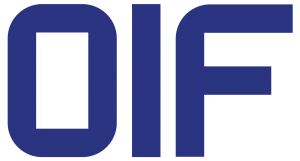OIF Announces Multi-Vendor Interop Demo at OFC
The Optical Internetworking Forum (OIF) announced today that member companies will demonstrate multi-vendor interoperability of Pluggable Coherent Optics, 56G Electrical Interfaces and for the first time, FlexE (Flex Ethernet) in live, operating environments. The demo will take place at OFC in Los Angeles from March 21-23, 2017.
“It’s important for the industry that companies continue to test and prove interoperability of these key technologies,” said Steve Sekel of Keysight Technologies, Inc. and the OIF’s Physical and Link Layer Interoperability Working Group Chair. “The interoperability demo serves as an important validation phase for the Implementation Agreements the OIF is working on. These documents are nearing the end of the draft review process, and this demo provides important feedback that devices designed to the draft specifications actually interoperate.”
The OIF’s Physical and Link Layer working group demonstrations include live 56G electrical interface interoperability with multiple silicon suppliers over a range of channel reaches from VSR (chip to module) to LR (backplane and copper cables) using both NRZ and PAM4 modulations. The expanding ecosystem for CFP2-ACO pluggable coherent optics will be showcased through live demos. Test equipment for 56G and coherent optics will also be demonstrated. The FlexE demo provides on-going validation of the implementation agreement.
Demo participants include Amphenol, Credo Semiconductor, Finisar, GlobalFoundries, Keysight Technologies, Inc., Lumentum, Molex, TE Connectivity, Xilinx and Yamaichi Electronics.
OIF Delivers on Enabling Next Generation Networks!
OIF member companies have teamed up to demonstrate significant progress in delivering an interoperable ecosystem of suppliers and solutions for critical market needs:
- 56Gbps live electrical signaling over all reaches
- CFP2-ACO Optical Interoperability
- FlexE (Flex Ethernet)
Public demonstrations will be on display March 21-23, 2017 at OFC in Los Angeles, CA in OIF Booth #3853. Additional information can be found here.
Also at OFC, the OIF will present “Enabling Next Generation Physical Layer Solutions” and host a workshop on “Serial 100Gbps electrical”. With the above mentioned 50Gbps CEI projects nearing completion, the industry is beginning the task of addressing serial 100G electrical links.
OIF Presentation: Enabling Next Generation Physical Layer Solutions
March 21, 2017 – 1:45pm–2:45pm – Expo Theater III
Moderator: Steve Sekel, Keysight Technologies, Inc., OIF PLL Interoperability WG Chair
Panelists: Ed Frlan, Semtech, OIF Technical Committee Vice Chair; Karl Gass, OIF PLL WG Optical Vice Chair; Tad Hofmeister, Google, OIF Representative
For more information on this presentation, click here.
OIF Workshop – 100G Serial Electrical Interconnect Needs
March 23, 2017 – 12pm-6pm
Los Angeles Convention Center
Level Two, West Hall – Room 518
To register for the workshop, click here.
About the OIF
The OIF facilitates the development and deployment of interoperable networking solutions and services. Members collaborate to drive Implementation Agreements (IAs) and interoperability demonstrations to accelerate and maximize market adoption of advanced internetworking technologies. OIF work applies to optical and electrical interconnects, optical component and network processing technologies, and to network control and operations including software defined networks and network function virtualization. The OIF actively supports and extends the work of national and international standards bodies. Launched in 1998, the OIF is the only industry group uniting representatives from across the spectrum of networking, including many of the world’s leading service providers, system vendors, component manufacturers, software and testing vendors. Information on the OIF can be found at http://www.oiforum.com.

